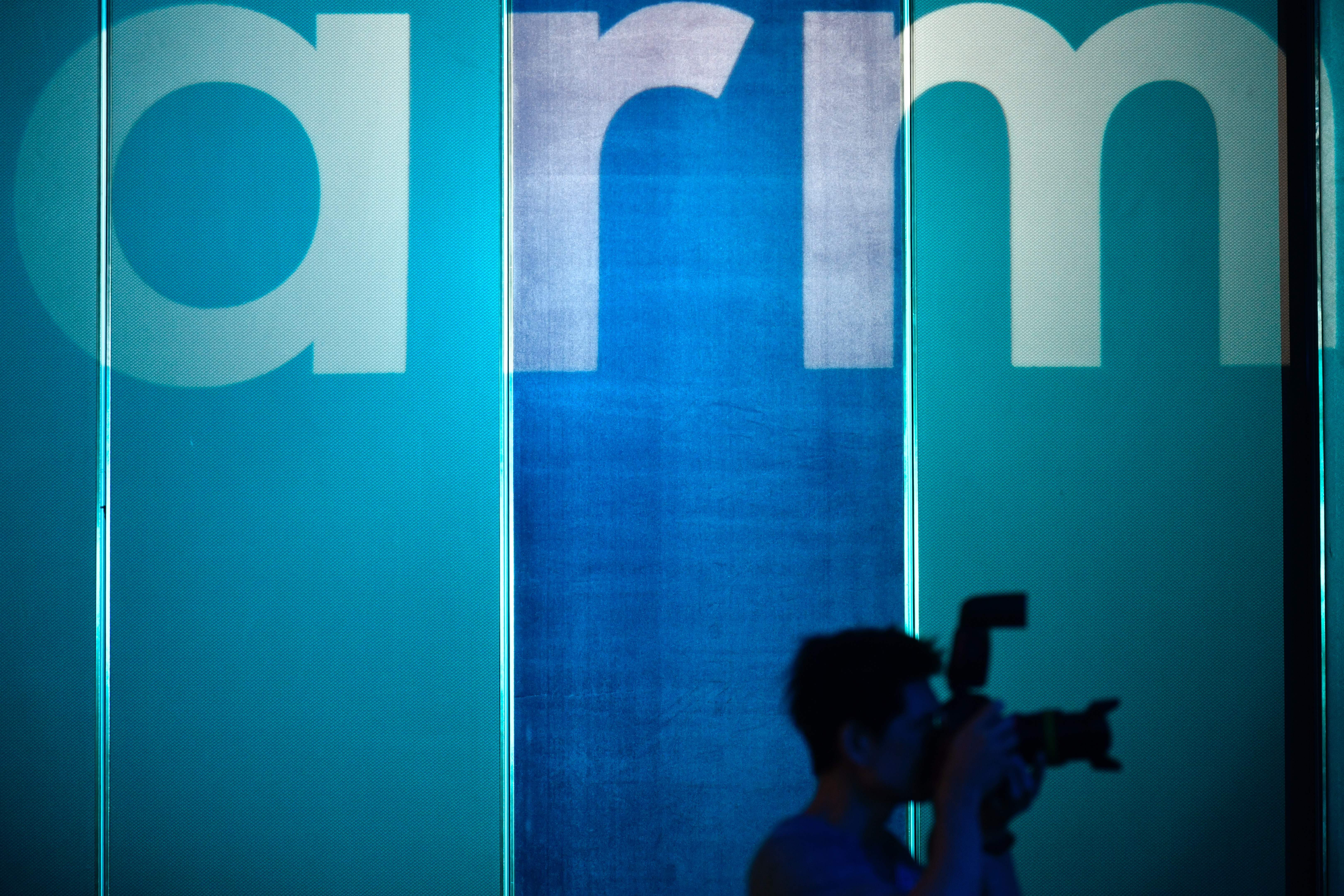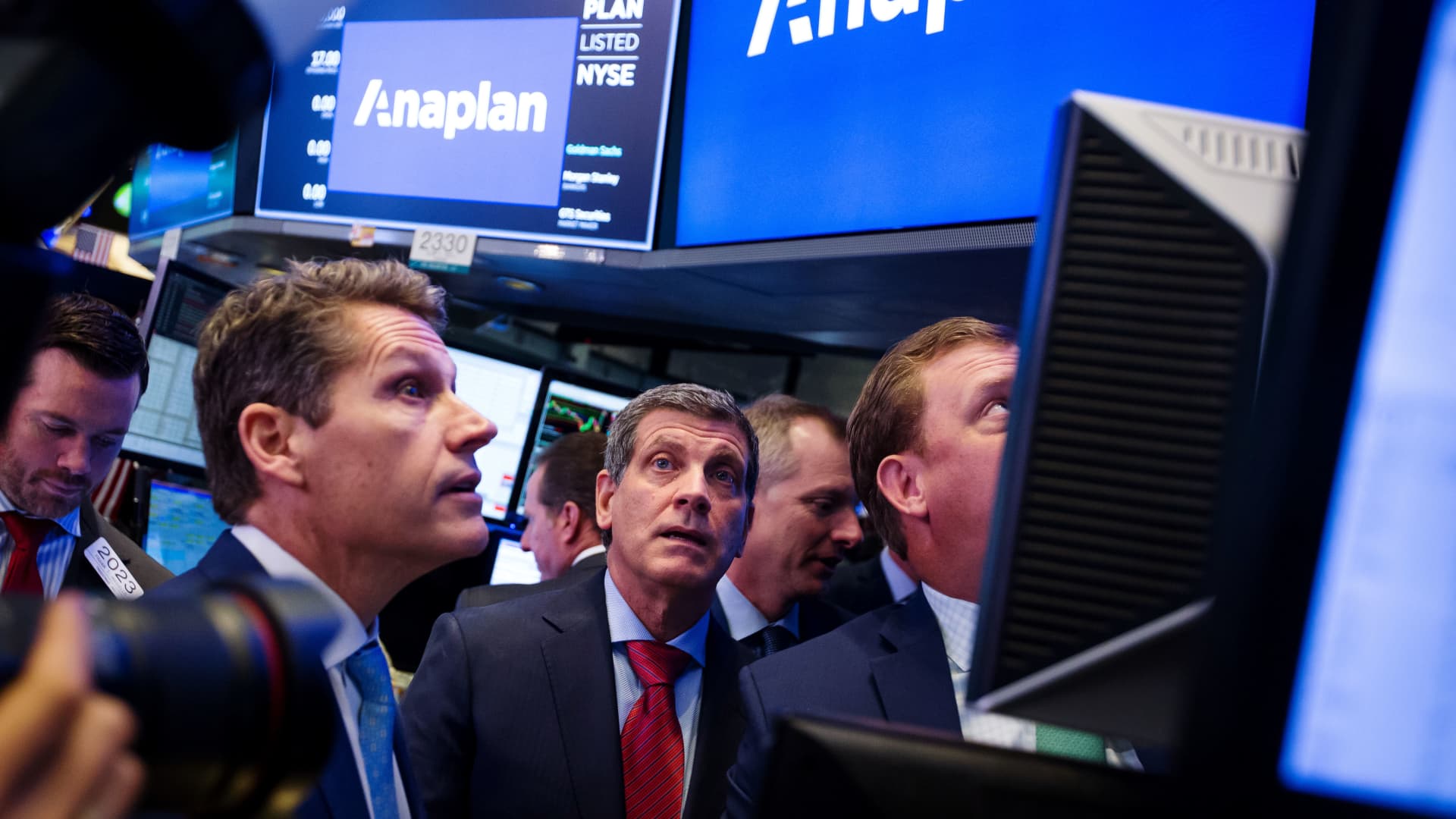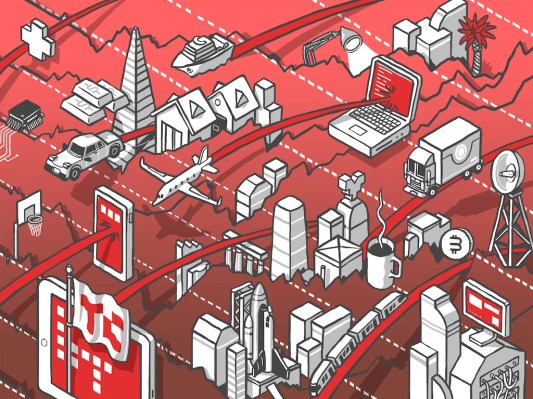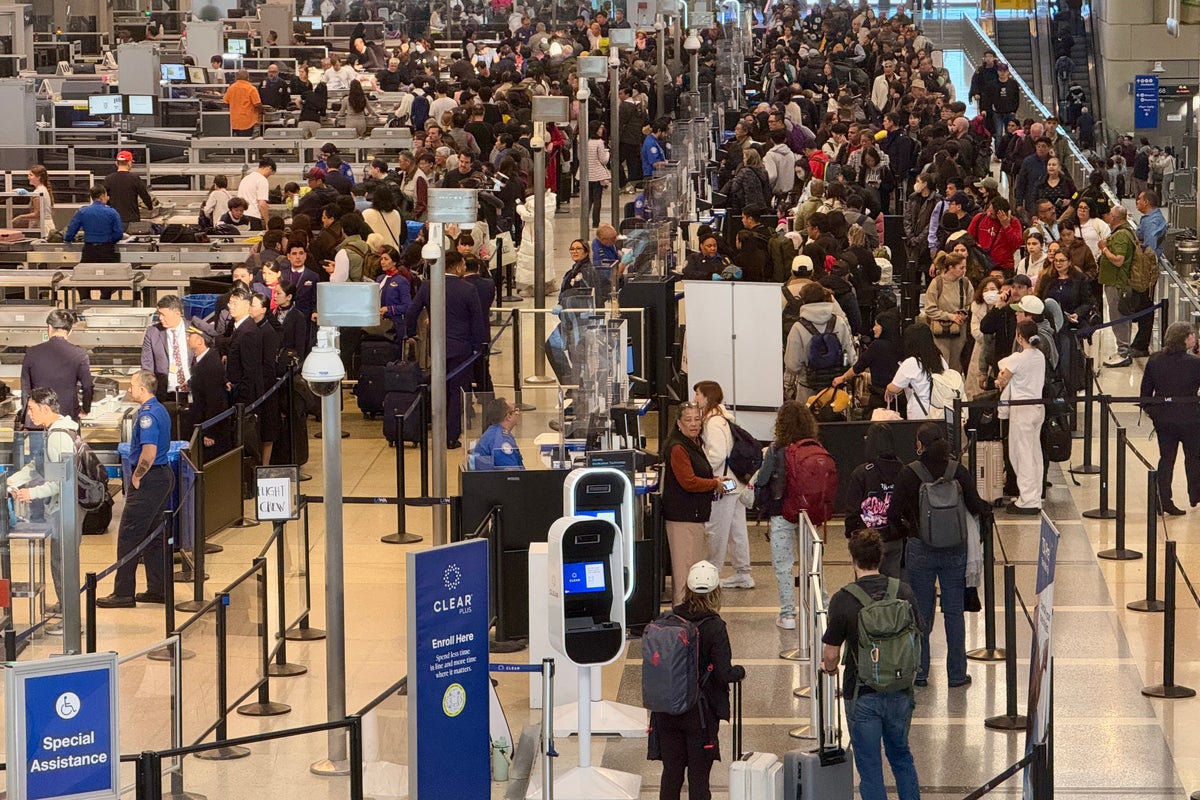Inside NASA’s strategy to make astronauts go viral
Astronaut Mike Massimino peers through a window on the aft flight deck of the Earth-orbiting Space Shuttle Atlantis on May 17, 2009. | NASA; Getty Images; photo illustration by VoxOver 100 pages of documents show how the space agency...

When NASA sent Mike Massimino back to low-Earth orbit to service the Hubble Space Telescope in 2009, agency staffers asked him if he’d mind doing another chore while he was up there: draft the first tweet sent from space.
Massimino said yes and didn’t think too much else about it. The New York native did remember that when he was a younger astronaut, Neil Armstrong had told him that he hadn’t planned what he was going to say when he first landed on the moon during the Apollo missions far in advance. Massimino figured he could take the same approach.
“I’m looking at the computer, and I can’t think of a thing. I’m like, that’s the worst advice I ever got from Neil Armstrong,” Massimino, who’s now an engineering professor at Columbia, recalled of his time at the telescope. “I ended up just putting whatever came to the top of my head.”
When he finally got to the telescope, Massimino pulled out a computer and wrote up a tweet, noting that the launch was “awesome” and he was “feeling great.” His message was then sent, via space email, back down to Earth, where a NASA staffer finally posted it to Twitter. The tweet quickly went viral, and was subsequently skewered by Seth Meyers, who was then a host of Saturday Night Live’s Weekend Update segment.
From orbit: Launch was awesome!! I am feeling great, working hard, & enjoying the magnificent views, the adventure of a lifetime has begun!
— Mike Massimino (@Astro_Mike) May 12, 2009Of course, it’s no longer 2009. Thanks to a software update in 2010 and some much-improved bandwidth capacity, it’s now possible to tweet and participate in other forms of social media from the International Space Station in real-time. As a result, astronauts’ Twitter accounts are no longer a novelty. They’re an active part of NASA’s social media strategy, according to documents obtained by Recode through a public records request. Astronauts may soon be posting from even farther from Earth, as NASA begins its Artemis program to explore the moon. The first mission, which is uncrewed, launched early Wednesday morning and will lay the groundwork for the space agency’s plan to return humans, including the first woman and person of color, to the lunar surface as early as 2025.
Still, the line between astronaut and influencer is only set to grow more complex as we enter this next space age. Along with a surging number of private space launches for the ultra-wealthy, companies like Virgin Galactic and Axiom are preparing to bring influencers, media productions, and even an entertainment studio to low-Earth orbit. And while social media posts will become demonstrations of conspicuous consumption for rich space tourists, professional astronauts traveling for NASA will still be the ones charged with putting a face on humanity’s ventures into outer space.
:no_upscale()/cdn.vox-cdn.com/uploads/chorus_asset/file/24200856/GettyImages_1244810091a.jpg) NASA’s Space Launch System (SLS) rocket with the Orion spacecraft stands on launch pad 39B as final preparations are made for the Artemis I mission at the Kennedy Space Center in Cape Canaveral, Florida, on November 15. Paul Hennessy/Anadolu Agency via Getty Images
NASA’s Space Launch System (SLS) rocket with the Orion spacecraft stands on launch pad 39B as final preparations are made for the Artemis I mission at the Kennedy Space Center in Cape Canaveral, Florida, on November 15. Paul Hennessy/Anadolu Agency via Getty Images
“You can be sure the NASA team and crewmembers will be sharing as often as possible during our missions to the moon and eventually to Mars,” Reid Wiseman, former astronaut and the current head of the astronaut office, told Recode.
The stakes are incredibly high. Social media is just one small part of the upcoming era of space exploration, but platforms like Instagram, Twitter, and TikTok are set to be one of the primary ways that the vast majority of people here on Earth will experience space, and even the lunar surface.
NASA goes viral
It’s no accident that when it comes to social media, NASA is arguably one of the most successful government agencies in the world. When the administration was established in 1958, it was directly charged with keeping the public informed of its missions and work. Throughout its tenure, the space agency has funded historical research, a fine arts program, and even established a television channel. Amid this effort, the agency has also encouraged its astronauts to pursue a sort of celebrity status, and even framed them as national heroes akin to military leaders.
“Very clearly, there’s a relationship at NASA between the interest in getting information out about what they’re doing and the ability for people to get excited about what they’re doing so that it gets funded,” explained Margaret Weitekamp, the curator of the cultural history of spaceflight at the Smithsonian’s National Air and Space Museum.
Incredible views as Cassada and Rubio work on installing the right struts for upcoming solar array upgrades. They will start cleanup and head back to the airlock after installing the right mid strut. pic.twitter.com/kM1tw7ng50
— International Space Station (@Space_Station) November 15, 2022Today, astronauts aren’t as famous as the people who participated in the early space programs, but plenty of current and former astronauts are active and popular on social media. Massimino’s first tweet received just over 2,000 likes — that’s viral by 2009 standards — and he eventually racked up more than a million followers.
“We were among the very first people doing social media up in space,” said Cady Coleman, who traveled to the International Space Station in 2011. “I really loved having, basically, a conduit — a way to share with people. At the same time, you have to be careful and respectful… You don’t want to show some of these experiments that might be proprietary.”
Astronauts have branched onto other platforms as they’ve become more popular. When Wiseman was on the ISS in 2014, for example, he posted the first Vine from space, a looping video of the ISS’s circulation around the Earth. Two years later, Mark Zuckerberg hosted the first Facebook livestream with astronauts in space, and the company, now called Meta, now offers a virtual reality-based series inside the ISS. Canadian astronaut Chris Hadfield famously filmed a viral music video for David Bowie’s “Space Oddity,” when he was aboard the space station in 2013.
This is all part of an intentional strategy by NASA. An undated social media training presentation prepared for astronaut candidates, which Recode obtained and NASA confirmed is the agency’s most updated version of the document, says that the agency has more than 10 full-time social media managers and runs 700 social media accounts (and “growing”) related to the agency on a wide range of platforms, including on Reddit, LinkedIn, and Twitch. Astronauts are directly advised on social media strategy. The presentation offers tips for vertical cropping, using hashtags, writing effective captions, and selecting topics that come off as “cool/funny.” Social media strategists at the European Space Agency (ESA), meanwhile, are in touch with astronauts on a daily basis, according to Marco Trovatello, a communications officer at the ESA.
:no_upscale()/cdn.vox-cdn.com/uploads/chorus_asset/file/24200184/SOCIAL_MEDIA_NASA.jpg) This slide was the only redacted document that Recode received after inquiring about the agency’s astronaut social media guidelines through a public records request.NASA
This slide was the only redacted document that Recode received after inquiring about the agency’s astronaut social media guidelines through a public records request.NASA
“I have never once been asked to help push a NASA agenda through my social media,” Wiseman said. He added that astronauts are allowed to “forge their own” paths and that he did not see any of the astronauts as “influencers.”
Daniel Huot, from NASA public affairs, told Recode that “everything we do is organic,” and that — outside of recruiting on LinkedIn — the space agency can’t use its funds for advertising, marketing, or promotion. Still, some have suggested that NASA’s focus on social media is undermining its broader responsibility to engage with the public.
Space also comes with its own social media guidelines, at least if you’re traveling with NASA’s help. The current code of conduct for the International Space Station crew bars people from acting in any way that might reflect “unfavorably in a public forum” or affect the public’s “confidence” in the integrity of any ISS partner, partner state, or cooperating agency. NASA told Recode that its staff is advised not to use TikTok because of a US law barring the space agency from engaging with companies owned by China. (Samantha Cristoforetti, an astronaut traveling for the European Space Agency, published the first TikTok from the ISS this past May.)
Earlier this year, during the Axiom Mission 1, the first all-private mission to the ISS, NASA still required approval for social media posts, including images and video, before publication, according to a presentation from the Johnson Space Center that Recode also obtained. Another document shows that in March 2022, NASA established a new review process to deal with images and social media created during private astronaut missions.
The politics of posting in orbit
Even the perception of politicization in space can spook officials, especially those involved with the ISS. Astronauts appearing non-partisan is generally standard operating procedure.
In February of this year, when Russia invaded Ukraine, Alison Koehler, a social media staffer at the European Space Agency, sent an email to Matthias Maurer, a German astronaut aboard the ISS. Before updating him on the followers he gained on his Twitter and Instagram accounts throughout February, she let him know that, amid the onslaught of war, ESA thought Maurer should adapt his approach to social media. Her request came just hours after the then-head of Russia’s space agency, Dmitry Rogozin, publicly mused that Russia might let the ISS, a powerful symbol of post-Cold War collaboration with the United States, slowly deorbit, and presumably, burn up in the atmosphere.
“I hope you’re doing ok. With the current attacks on Ukraine, we are conscious of achieving the right tone on social media and plan to focus more on the science and operations you’re supporting on Station rather than Earth imagery or more other posts at this time,” Koehler wrote. “Also, in light of this, any additional imagery of life on board, science, operations etc. that you may have or be able to take over the weekend would be really appreciated.”
Recently @NASA_Astronauts Kayla Barron put on her crew medical officer hat & picked up an instrument called a tonometer. By gently tapping the surface of my eye, this instrument allows her to measure my eye pressure as part of regular medical testing in orbit #CosmicKiss pic.twitter.com/ETKEReoxAv
— Matthias Maurer (@astro_matthias) February 28, 2022Trovatello, the ESA representative, said that while the agency doesn’t block astronauts from speaking about any topic, all communications regarding Ukraine were taken care of by the agency’s director general. “I had some rules for myself: Don’t talk politics, don’t talk religion,” André Kuipers, an ESA astronaut who traveled to the ISS twice, recalled that during his time at the station, he tried to focus on discussing science, technology, and activities in space, and didn’t focus on subjects like politics. “All positive things,” he said.
NASA’s aspiration to at least maintain the appearance of impartiality in space, even during conflicts on Earth, also applies to social media. In July 2018, Patrick G. Forrester, who was then chief of the astronaut office at NASA, sent a memo to astronauts instructing them to “use discretion” expressing sympathy during events like terrorist activities or civil unrest, at least on social media, because doing so could be interpreted as a “political statement.” NASA’S astronaut social media training presentation also includes a reminder to keep captions as “high level” as possible, especially when describing geographical borders that might be contested.
“My first gaff was a picture I posted and titled’“Beautiful pass over the Falkland Islands,’” Within seconds I had people commenting that they did not recognize that name but preferred ‘Malvinas Islands,’” Wiseman told Recode. “This was a great moment of learning for me and a clear reminder that I was not an American in space, I was one of six Earthlings living off of our planet”
These tensions have continued to emerge amid Russia’s war in Ukraine. In March, officials privately wondered about the meaning behind the suits worn by cosmonauts who arrived on the station that month, according to emails obtained by Recode. Because the suits were yellow and bore blue stripes, some speculated that they might be an indication of support for Ukraine. (Russia later dismissed that idea.) Even space tourists who traveled on the private Axiom 1 mission to the ISS seem to have been briefed about guidelines. Along with instructions about advertising rules, they were also instructed about answering questions about Russia and Ukraine, especially because they could, presumably, interact with the several cosmonauts aboard the space station. Axiom Space did not respond to a request for comment by the time of publication.
Eventually, NASA plans to start using corporate space stations that may service several countries, along with media productions, which could create a whole new genre of social media posts from space. At the same time, other countries are already moving ahead with building their own space stations, and advertising them on social media, too. This is already the case with the Chinese social media platform Weibo and Tiangong, the space station that China’s space agency completed earlier this fall.
“China stated that it will utilize its social media accounts to further communicate with Chinese audiences about the space missions and generate widespread enthusiasm and excitement about China’s space program,” explains Namrata Goswami, an independent space policy expert. “It is working, given the widespread support in Chinese society for China’s investment in its space program for the long haul.”
Coming to a moon near you: posting
In advance of the Artemis 1 launch, NASA’s social media team prepared by inviting influencers down to Florida and encouraging people to post content celebrating the mission on their live television broadcast, which also included answering questions from celebrities. That’s just the beginning: Now that its Orion capsule — which will eventually carry astronauts — has begun its journey to the Moon, NASA says we can expect lots more content, including images and video collected by the spacecraft’s exterior.
“We expect to see everything from Snoopy floating inside the capsule as our official zero gravity indicator to views of the Moon to our home planet from the perspective of space,” Stephanie L. Smith, social media manager at NASA, told Recode. “At splashdown, we’ll go live again with our many simulcasts and chats to share this flight test with as many people as possible.”
Eventually, this could foreshadow astronauts posting on social media from and around the moon. Many of the astronauts selected for the Artemis program have already developed social media followings, and NASA links directly to their Twitter and Instagram accounts on their official profiles. While the space agency’s ability to send data across deep space, rather than just from the ISS, are still somewhat limited, the agency will, at a minimum, have enough capacity to send messages back to Earth, where there will be, according to NASA public affairs’ Daniel Huot, “personnel on the ground available for proxy posting.”
We don’t know what social media platform will be in vogue when astronauts do finally land on the moon (perhaps we’ll soon see the first BeReal on the lunar surface). In the meantime, though, astronauts still have plenty of other outlets at their disposal, including Twitter, Facebook, and Instagram. While for most of us here on Earth, these apps might be just another way to waste time on the internet, they’re considered a form of public service for NASA crew members.
“99.9% of people will never get to experience what you will,” NASA says in its training documents. “Social media is a chance for them to experience it through you.”
Help keep articles like this free
Understanding America’s political sphere can be overwhelming. That’s where Vox comes in. We aim to give research-driven, smart, and accessible information to everyone who wants it.
Reader gifts support this mission by helping to keep our work free — whether we’re adding nuanced context to unexpected events or explaining how our democracy got to this point. While we’re committed to keeping Vox free, our distinctive brand of explanatory journalism does take a lot of resources. Advertising alone isn’t enough to support it. Help keep work like this free for all by making a gift to Vox today.

 Hollif
Hollif 

































